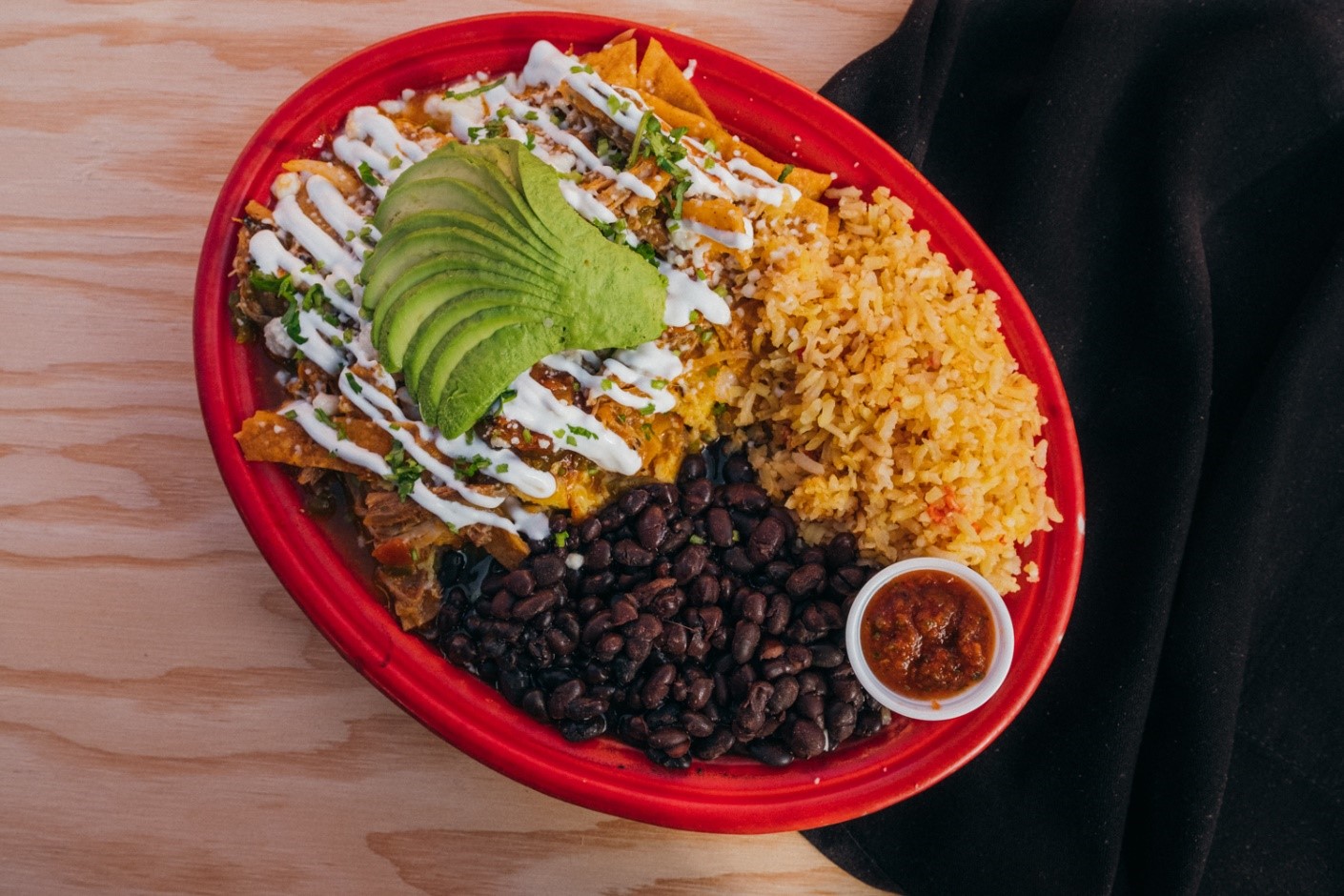
The Reinvigoration of a Longstanding Dish
Chilaquiles is the Taylor Swift of the food world, having started on a traditional path that was pleasing to the home crowd, and then deftly crossing over into the mainstream. Swift went from country music to pop stardom; chilaquiles went from Mexican dining tables to hip brunch specials. You’ll most likely be exposed to both while out for Sunday bloody marys.
It could be because chilaquiles are a perfect hangover food — tortillas cut in quarters, and sautéed with zesty salsa. Cheese and eggs are added for a creamy texture to the crispy chips, which then slightly absorb and soften, and are served with a side of refried or pinto beans. It’s an enticing, belly-satisfying option for those morning-after brunches.
The history of chilaquiles traces back to the early Aztecs. Subsequently, the dish debuted in the U.S. in 1898 after serving as a staple in Mexico for hundreds of years. Variations of the recipe were found in different regions throughout Mexico. It was common for families to prepare chilaquiles to use up leftover ingredients — they often tossed in beef, chicken, avocado and queso fresco. Because of the versatility of this dish and its potential for unique twists, chilaquiles is popular among younger generations and chefs, who add their own ingredients to make the dish their own.
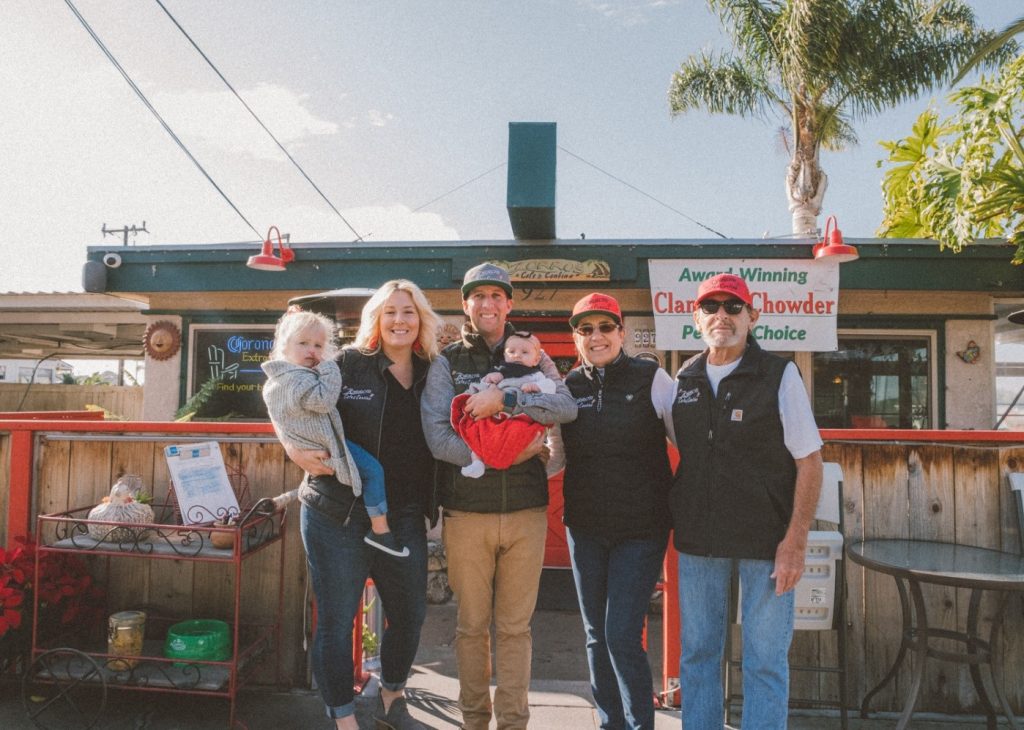
Zorro’s Café & Cantina in Pismo Beach makes its mark on the traditionally simple recipe by adding some texture. They first sauté bell peppers, onions and tomatoes, toss them with deep-fried tortilla chips, eggs and carnitas and then smother it all with homemade molcajete Spanish red sauce. It’s this sweet and savory sauce, they say, that makes this dish so special.
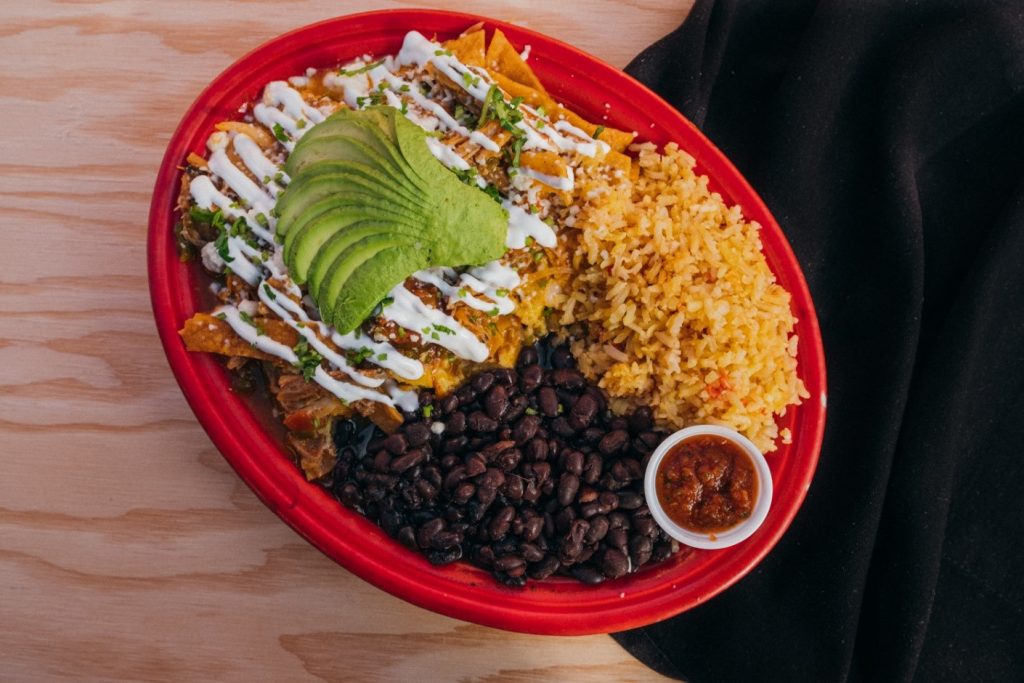
Zorro’s was founded by owner Cindy Foresee and husband Steve Landrigan in 2005. At Zorro’s no one holds a Head Chef title. Cindy created the original menu, which has been tweaked over the years. She worked for the previous restaurant owners as a server, but dreamed of a café of her own for years. When the opportunity presented itself, Cindy jumped, and made it happen by sheer will and determination — working full-time at F. McLintocks down the street as a banquet manager during the evenings, and Zorro’s in the mornings, for many years. It was during this time that she developed a large menu focused on fresh ingredients and flavors, and chilaquiles made the cut.

Chilaquiles makes sense to serve, according to Executive Chef Shaun Behrens at Luna Red in Downtown San Luis Obispo, because of the connection restaurant guests have to it. “Chilaquiles has always been a comfort food with different interpretations. It’s become popular because it offers both convenience and comfortability, flavor and familiarity,” he says. Chilaquiles has been a staple on the Luna Red menu since day one, and the recipe changes based on available farm fresh produce.
The original co-creator of Luna Red, Shaun helped conceptualize, launch and put the restaurant on the SLO culinary map with seasonal menus and an international array of flavors that celebrate the bounty of the Central Coast. In 2017 Shaun left Luna Red to help open Blue Heron in Baywood-Los Osos, where he could teach his culinary skills and foster the perfect experience: grassroots cooking. Now back at Luna Red, Shaun continues with the momentum that he’s achieved in his field while honoring the dishes that he’s built his name on, including chilaquiles.
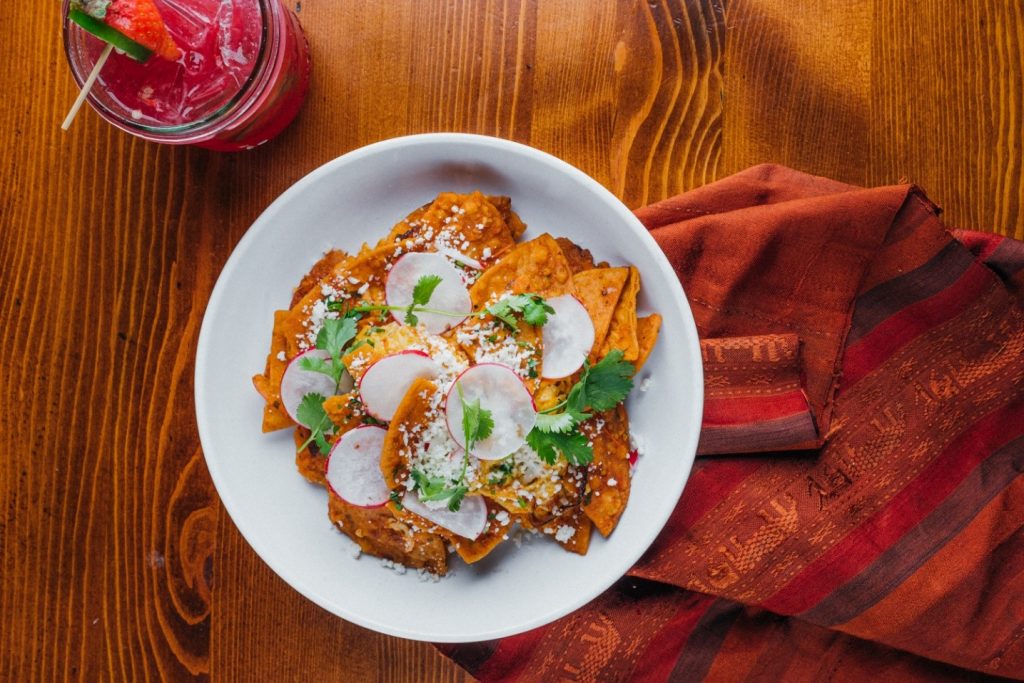
According to Shaun, the success of the dish is in the chips. “It should resemble ‘wet nachos.’ If you used soft tortillas, it wouldn’t be the same. Our chips are made in house and sautéed with a spicy fragrant tomato sauce. We roast our own tomatoes, add onions, cilantro, chiles and sauté until it comes together and the chips absorb the sauce. Then we plate with scrambled eggs and top with salted radish, queso fresco and more cilantro.” He too agrees that “it’s ideal hangover food.”
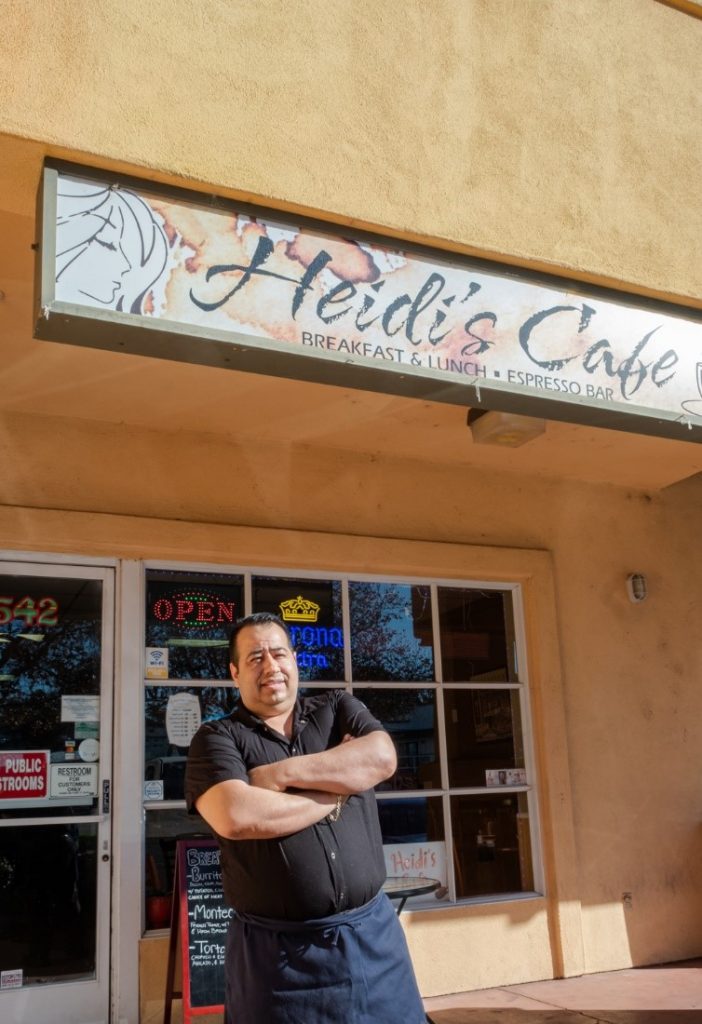
]In North County, Heidi’s Café in Paso Robles is arguably the queen of chilaquiles. The establishment, owned by husband and wife team Alex and Maria Figueroa, is a small 40-seat restaurant with a surprisingly robust menu comprised of both American and Mexican cuisine. The two of them make up the entire staff. Maria handles all front of house duties, while Alex takes care of all of the cooking, with the exception of the salsas and sauces. Alex praises his wife as the expert who makes those.
It is the salsa, he says, that truly makes chilaquiles. Differing from Luna Red and Zorro’s use of salsa roja in their versions, Heidi’s features green salsa, or salsa verde, made of tomatillos. Maria first roasts the tomatillos before boiling them, a step that is easily skipped when making traditional salsa. But for Heidi’s Café, that charring is necessary for the flavor Maria is looking to achieve. In agreement with Shaun, the Figueroas stress the importance of keeping the tortilla chips crisp. When cooking the chilaquiles, Alex fries the tortilla pieces to order, and then quickly folds in the warm salsa and eggs. Cold salsa results in loss of flavor.
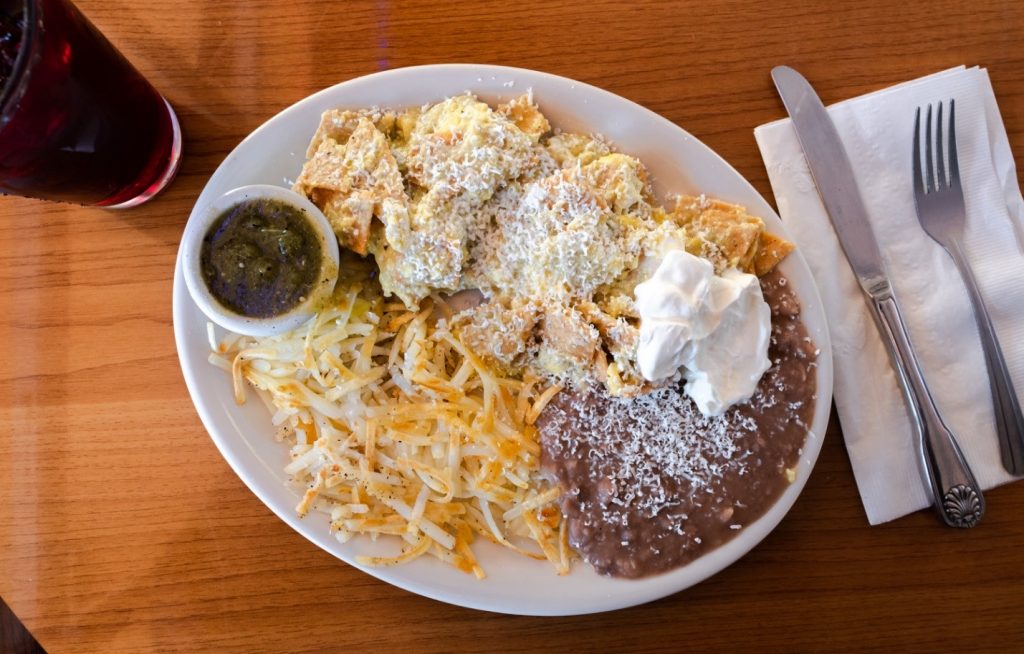
Alex and Maria opened Heidi’s Café in 2017, and though they have a deep connection to Mexico (including having met and married there 20 years prior), Alex didn’t cook Mexican food professionally until just a few years ago, though he’s been working in restaurants since age 16. He started by washing dishes at Linn’s of Cambria and since then, has held every restaurant position possible — dishwasher, server, manager, and prep, line and head cook — at many eateries in North County: The Steakhouse at the Paso Robles Inn, Buona Tavola, Wilson’s (in the space now occupied by Paradise Grill), Downtown Brewing Co. (in the space now occupied by Sweet Lew’s), and the list goes on. With the exception of Buona Tavola, which serves Italian fare, Alex always worked at restaurants that served American cuisine. When opening Heidi’s, he and Maria knew that they wanted to showcase both American and Mexican cooking. Of their entire menu, the chile verde omelette and the chilaquiles have emerged as the most popular selections.
Just the two of them running all aspects of the restaurant makes one wonder if they might burn out. But, for Alex, he speaks highly about his love of working, and says that cooking doesn’t feel like work. “I feel good when I make others feel good.” And it’s not hard to keep the customers feeling good and satiated with chilaquiles on the menu.

